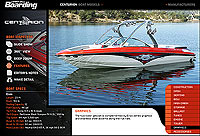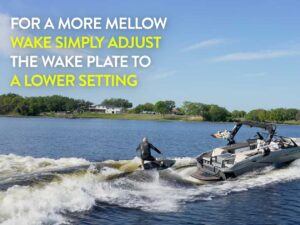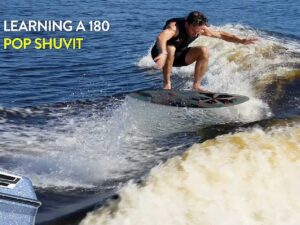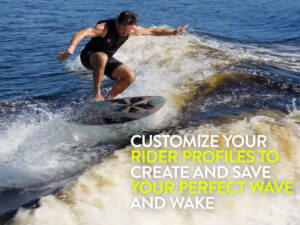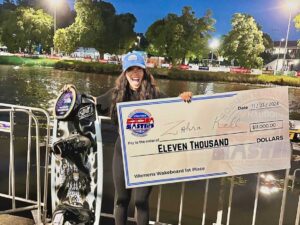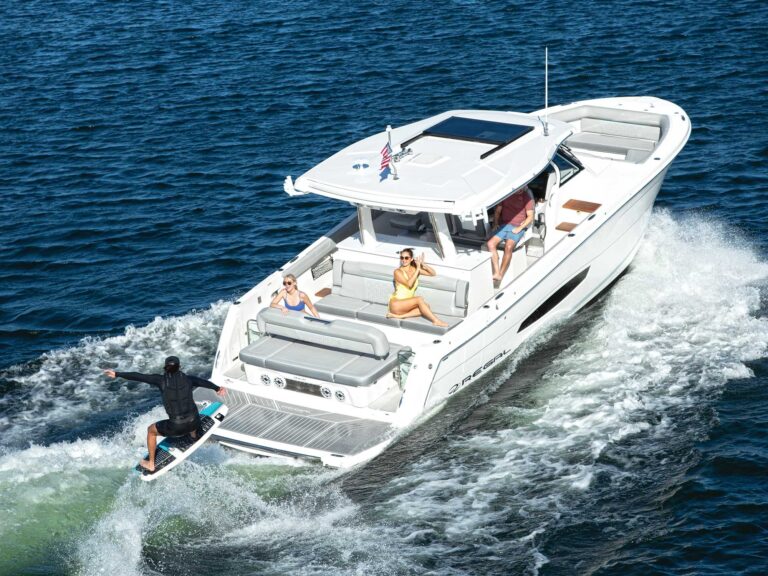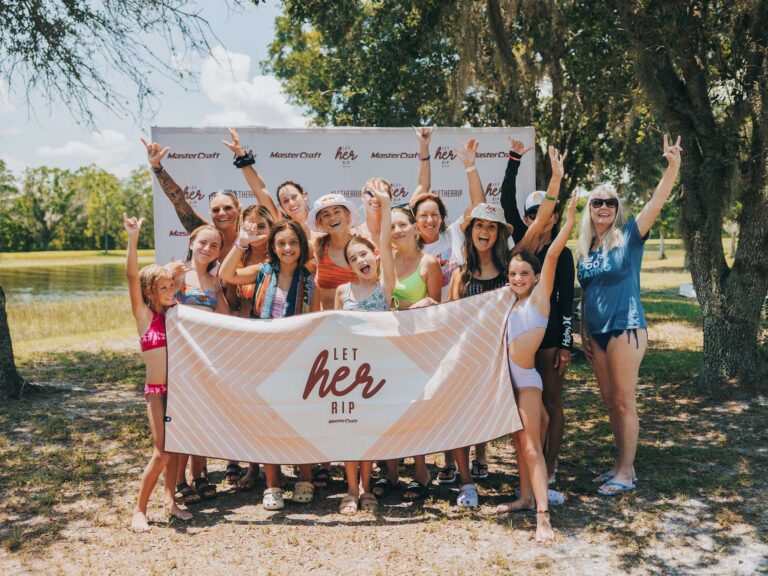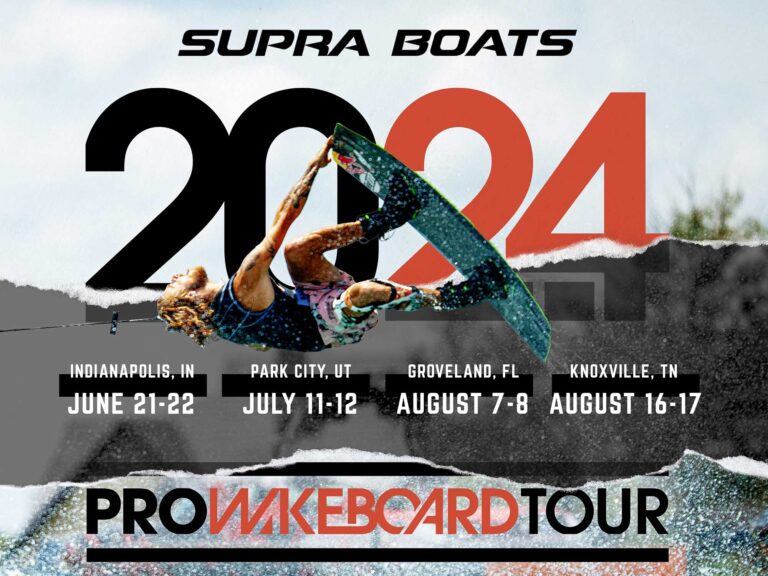Today’s Perfect Wakes
It’s not your imagination – the 2006 boats you may be test-riding now really do have the best wakes yet. Here’s why.
We’re on boat overload at WBM. For months, we’ve been out across the country visiting boat makers and riding every 2006 model. Heads are exploding around here with all the info collected. Here are the highlights as we break down the wakes themselves and what it is about the boats that makes them so great. Then check out which boats we’re calling the world’s best.
The Wake Graphs
For the 2006 boats, we engineered a new way to chart wake shape. In extensive trial sessions, we stationed a measuring pole in the water, then calculated the trough, ramp, peak and table through slow-motion video capture.
How These Create the Wake:
Hull
“You want a clean hull with minimal through-hulls, smooth running gear and good lines so you get a clean, low-cavitation wake,” says Joshua Sauer, MasterCraft’s naval architect. “Avoid true deep-V boats and hard-keel boats; they throw steep, lippy wakes with big rooster tails. Instead, look for a boat with a hard keel forward that eases, or rounds out, aft to the transom.”
Ballast
Malibu designer Dan Gasper gives a quick rundown: “Any ballast weight in the tanks makes the wake bigger, but the placement of that weight changes the shape. The higher the tank levels in the bow and at midship, the more round the lip of the wake becomes. The higher the tank levels in the rear, the sharper the lip becomes.”
Wake Adjusters
Hydrofoils such as Correct Craft’s Hydro-Gate, Malibu’s Power Wedge and Centurion’s Switchblade put more downward pressure in the water without adding ballast, thus helping shape the wake. Tige and Supra, for example, use trim tabs or plates in coordination with hookless hulls to adjust the running attitude of the deep-riding boats. “TAPS2 acts as more of a displacement adjustment than a wake-shaping system,” says Tige’s Kip Davis.
Going Long to Go Big
Wakeboarding boat models 23 feet and longer:
| 2000 | 2001 | 2002 | 2003 | 2004 | 2005 | 2006 |
| 4 | 3 | 4 | 4 | 12 | 15 | 21 |
Longer boats mean heavier boats, which means bigger wakes. But how long is too long? 24 feet? That’s one answer, according to Tige’s Kip Davis: “Documented boat tests and pro-rider evaluations indicate that currently wakeboard wake characteristics suffer when a boat exceeds the 24-foot range.” On the other hand, Malibu’s Dan Gasper says of the company’s all-new 24-foot, 7-inch Wakesetter 247 LSV, “We feel it makes the best wake in the industry.”
As boats do grow longer, hull design becomes that much more important to preserving wake shape. “I don’t think there really is too long a boat,” says MasterCraft pro rider Zane Schwenk, who raves about the 28-foot X-80. “Baasically in my experience, with a longer boat the wakes can get taller so you need to add a bit of speed to keep the wake crisp at the top, and the wakes are sometimes a bit wider than you might have been used to so you either cut harder or shorten up the line a bit.”
Going Wide to Party Big
Wakeboarding boat models 96 inches and wider:
| 2000 | 2001 | 2002 | 2003 | 2004 | 2005 | 2006 |
| 4 | 11 | 16 | 29 | 36 | 40 | 48 |
Wider boats have been able to load up more riding friends. But how wide is too wide? 103 inches. Most boat manufacturers stop at 102 inches to keep the boat trailerable. That’s the maximum width allowed on the interstate and many major roads, though rules can vary state to state – and you may be able to make arrangements to tow something wider.
As for how boat width affects the wake, designer Matt Brown of Skier’s Choice (Supra and Moomba) says, “If the hull is really wide, then the hole being displaced is going to be wide. However, it is possible to keep the running surface relatively narrow and then step the hull out above the running surface to get a wider boat with a narrow footprint.” So not all 98-inch-wide boats will necessarily have the same wake width.
The 2006 Trends
Better hull designs
Pretty much every company is continuing this work with effective revisions showing up for 2006. Tige, for one, is focused on continuing to refine its ConvexV hull, for example, rather than developing ballast capacity and hydrofoils.
Mid-size revisited
While boats have been getting longer in the past few years, ’06 sees companies taking a fresh look at their model offerings in the low 20s. Supra came out with a new set of 20-foot-8 boats, while MasterCraft’s 20-foot X-2 wraps big offerings in a smaller package.
Standard speed control
This year a lot of boats with electronic fuel-injected engines will automatically come with some form of cruise control. While these systems don’t have the customization options of Perfect Pass, they’re good basic features that will help any driver.
Extra-versatile seating
Rear-facing flip-ups, convertible benches – all of the ways to rearrange the interior configuration are more popular than ever. Correct Craft has a three-way bench and cool chaises on its 220 model.
More comfort
This shows up in bigger wraparoun
d lounges, like the stretched-out one on the Malibu 247, and more cushiony upholstery. Even the budget-priced Moomba stepped up its vinyl and foam for ’06.
